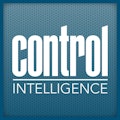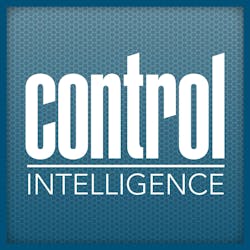In this episode of Control Intelligence, editor-in-chief Mike Bacidore shares highlights from a panel discussion that took place at the CSIA Exchange.
Transcript
Digital tools have become important assets in the system integrator’s arsenal. A variety of products and services are changing the way controls automation is utilized in equipment. At the CSIA Exchange in Dallas, which marked the 30th anniversary of the Control System Integrators Association (CSIA) meeting and conference, Tim Ogden, director, solution provider program, GE Digital, led a diverse group of panelists representing the process/discrete manufacturing industries, industrial automation and manufacturing execution and operations.
All three panelists— Brian Romano, director of technology development at Arthur G. Russell (AGR), an original equipment manufacturer (OEM) that builds equipment; Renato Leal, founder/CEO, GreyLogix Brasil; and Sam Hoff, president and CEO of system integrator Patti Engineering—were part of a similar panel at the previous year’s CSIA Exchange in New Orleans.
At Patti Engineering, digital twins and virtual commissioning have become esteemed components in the toolkit. “We’re doing a lot of work using the Siemens product,” said Hoff. “We do a lot of upgrades.” In fact, Patti Engineering shut down a line and upgraded a system the weekend following CSIA Exchange in Dallas. The upgraded system needed to be up and running on Monday after the weekend upgrade.
Patti Engineering’s use of simulation shortens the time to production start. “You have to build a model,” explained Hoff. “The whole idea is to be able to simulate the code and simulate the system beforehand. Maybe you’re building a new line for General Motors (GM); those parts are very expensive for GM to build. There are certifications on drives that are being done digitally now. It does cost a little more upfront, but you’ll save time in the field.”
Hoff also explained the difference between a simulation and a digital twin. “You have to feed that real-world data back to make it a digital twin,” he said. “Now you can feed historical data back to the digital twin. In the old days of delivering a system, you handed them a manual and said, ‘Call me when it breaks.’ That’s not a good way of doing business. We have monthly calls with customers and do service calls. Through analyzing data, you can use the twin for what-if scenarios.”
Arthur G. Russell’s Brian Romano has been in automation more than 43 years. “We start off at the proof-of-concept level,” he explained. “I specialize in connecting the factory floor to the business system. We were doing Industry 4.0 before it was a thing.” Romano identified four steps:
- expose the date
- collect the data
- analyze the data
- apply the learning.
“My mandate when first coming onboard was to put together a data system that would differentiate us as an OEM that would do things others wouldn’t do,” explained Romano, whose vision was to build that system into the equipment, so the customer could just plug into it.
“We also wanted to offer customers a way to bring the old machines into the digital thread,” he recalled. “Some tools we use go back to legacy stuff, like unplugging a photo eye. How can I go to Industry 4.0 if I can’t bring the full legacy suite into the realm?” Once Arthur G. Russell got its customers onboard, it took a step back and gave remote support.
“There’s a lack of technical help out there because of the silver tsunami and COVID,” said Romano. “I put together a skills matrix. I have a spreadsheet for every employee in my department. Some are specific to us, but some are not. By being able to look at the skills matrix, I can assign the right person to the right job. Plus, I can do pairing to train new employees with skills.”
GreyLogix now has an office in Florida, giving the organization three different touchpoints with customers, said Renato Leal. “We try to make things simpler,” he noted. “We invested in an online virtual tour, so people can go into our facilities and see what we do. We created a platform where you can navigate through the system.”
When GreyLogix calls on customers, it brings a ready-made opportunity for a user to enter the Industry 4.0 world. “We have a YoT box,” explained Leal. “IoT solutions are a fast-track way for customers to get to Industry 4.0. When we go to the customer, we try to remove the barriers to saying no. When the customer sees the information from his own machine or process, it’s the kind of solution you can charge as a service, so you have recurring revenue.”
Once the customer sees the information via the YoT box and likes the information, Leal said he hasn’t had a customer that returned the contract.
“We believed in this idea,” he explained. “It’s the kind of venture that doesn’t pay off from the get-go. We spent some hours and money on that. We started investing in that. During the development, we realized we needed a lot of IoT capabilities. Now our IoT team is a mixture of IT and OT guys. We have more than 100 of these boxes installed. It’s a process.”
About the Author

Control Intelligence
A Control Design Podcast
Control Intelligence is a Control Design podcast that goes deep inside the automation and technology that machine builders, system integrators and end users rely on to keep production humming efficiently. New episodes come out every Monday, and download all episodes by Apple Podcasts or Podbean.
Sign up for our eNewsletters
Get the latest news and updates

Leaders relevant to this article:
